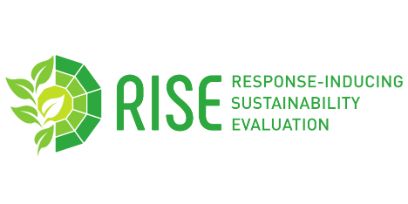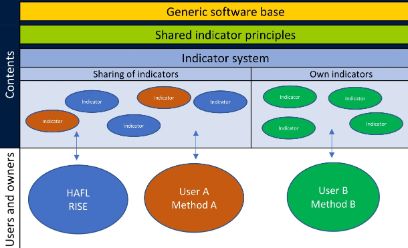Pre-filling of questionnaires by farm managers
Prior to the interview, the advisor sends the farm managers a web link for self-assessment. This gives farm managers the opportunity to present their internal view by entering into the software a direct assessment of their RISE results for the various themes and indicators.
Via a second web link, the farm managers can access the farm survey questionnaire provided by their advisor and pre-fill it, if they so wish and in so far as they can. They can, for example, pre-set the region or the calculation variants for the indicators. The latter can be qualitative, quantitative or a direct entry.
After pre-filling, the farm managers release the questionnaire to the advisors, after which point the farm managers can make no further entries. This prevents a back and forth of data being altered or overwritten.
Interview flow
In RISE 3.0, the order of the questions follows the logic of an agricultural holding, starting with all the questions on soil, followed by questions on livestock and so on. In RISE 4.0, the questions are structured according to the results’ themes and indicators. The benefit of this approach is that it is always clear to which indicator a question relates. This allows farm managers to answer more precisely and more quickly, not least because queries as to the questions’ context may be eliminated.
As soon as all the questions regarding a specific indicator are answered, the software immediately calculates and visualises the result. The interview can thus be combined with feedback (discussion of the results). However, it is also possible to complete the interview first and discuss the results with the advisor during a second visit.
Advisory scheme from the perspective of farm managers
Preparation
You will discuss the details of the advisory with the RISE advisor by telephone. You will have documents at hand or mail them to the advisor.
Time needed: 0.5h*
↓
Self-assessment
Using a web link sent to you by the advisor, you will complete a self-assessment of your operation with regard to the sustainability themes and indicators in the RISE software.
Time needed: 1 – 2h*
↓
Pre-filling the questionnaire
Your advisor will send you a second web link to a questionnaire that he/she has prepared for and adapted to your holding. If you like and are in a position to do so, you may further pre-fill this questionnaire yourself.
Time needed: 1 – 3h*
↓
Farm walk and analysis and advisory meeting
At the start of the meeting, you will take the advisor for a short tour of the holding.
Then you can decide the order in which you wish to enter the data into the software together with your advisor. You can choose which topics you wish to start and end with, and how detailed the analysis should be. If you like, you can view the results immediately after completing a theme or after completing the entire analysis.
Time needed: 4 – 8h *
↓
Results & action planning
With the advisor, you will discuss the analysis results and what they mean for your operation. You will prioritise your new targets and plan appropriate measures to be taken.
Time needed: 2h*
↓
Further advice and assistance (flexible)
After 3-6 months you will take stock together with the advisor. You will discuss outstanding issues and plan next steps.
*The hours needed are estimates and depend on the farm’s size and complexity.



